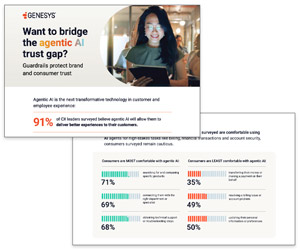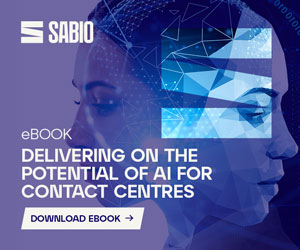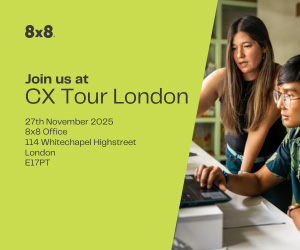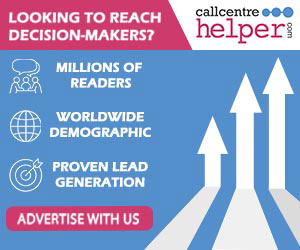Genesys explores how social media has become a powerful driver of customer experience, and how brands can use social listening to turn public feedback into loyalty-building, real-time service.
In today’s experience economy, where the quality of many brands’ customer experience (CX) has become their chief differentiator, consumer opinions aren’t just shared – they’re broadcast.
With every tweet, tag and post, consumers are shaping how brands are seen, trusted and remembered. And often, it begins with one experience worth talking about.
According to the 2025 “State of Customer Experience” report from Genesys, 41% of consumer respondents said they’d recommended a company in the past year because of a positive service interaction.
And one-third say the most likely reason they’d mention a brand on social media is because they had a great experience. In other words, people talk – and when they do, great service becomes one of the most powerful forms of marketing.
Of course, those social media conversations don’t always consist of glowing praise. Negative experiences, unmet expectations or even a delayed response can just as easily trigger a wave of public criticism.
In an age where visibility is constant and sentiment spreads fast, brands can’t afford to just listen – they need to respond, learn and adapt. That’s where social listening becomes a critical part of the customer experience strategy.
What Customers Are Sharing – and Why It Matters
It’s easy to assume that social media is where people go primarily to vent their frustrations. But the data tells a more nuanced story.
According to the State of Customer Experience report, 46% of consumers who’ve shared a service interaction on social media did so because they had a positive experience.
Only 19% say they posted because of a negative one. In fact, a third of consumers say the most likely reason they’d post is to highlight great service.
That means much social sharing is actually rooted in loyalty, not complaint. When customers feel seen, supported or surprised in the best way, they turn to their networks to amplify the moment.
For Gen Z and millennials in particular, social media is where brand affiliation becomes personal. It’s how advocacy is expressed.
This is more than anecdotal feedback. These posts, comments and shares are high-signal moments that shape perception at scale.
One customer’s great experience can quietly validate a brand’s promise to hundreds or thousands of others. Conversely, a single unresolved issue aired publicly can damage trust in ways no Net Promoter Score (NPS) could fully capture.
For CX leaders, the takeaway is clear: Social media is not just a customer service channel, it’s a real-time feedback loop.
And every moment shared can be a moment of either amplification or erosion. Treating these interactions as strategic signals, not background noise, is essential to building lasting brand loyalty.
The CX Opportunity: Listening Beyond the Contact Centre
When most companies think about customer service, they focus on traditional, one-to-one channels like email, phone or web chat — and for good reason.
The State of CX report shows that 71% of consumers still prefer phone when they need help, with email and web chat not far behind. But a closer look reveals an emerging shift in how and where customers want to engage.
A growing number of brand-related conversations aren’t happening in the contact centre at all. They’re unfolding in public digital spaces, on Instagram, YouTube, Facebook and X.
These posts might not originate as formal support requests, but they often reflect real experiences, questions or pain points that directly influence public perception.
This shift is especially noticeable among younger generations. While phone and email remain in the top three for Gen Z and Millennials, they’re also significantly more likely than older generations to embrace messaging apps and social platforms as part of their service toolkit. Preferences are broadening, and, with them, expectations for how and where brands show up.
The problem is, most organisations can’t hear these signals. Unless a comment comes through as a direct message or tagged mention, it typically slips through the cracks.
Forums, influencer threads and untagged posts remain blind spots, full of tremendous insight but invisible to many CX teams.
That’s where social listening changes the game. It’s not just about hearing more; it’s about understanding more and responding strategically.
But this isn’t just a marketing tool. CX teams can establish escalation rules that assign directly to agents, in real time, social posts demanding attention.
Agents are then able to engage with these posts using the same unified workspace used for other interactions, like voice or email. Furthermore, they can manage public and private replies, and even seamlessly switch between them.
For example, a post might start with someone asking for an update over a public post, and then the agent can also respond publicly, but they might advise the customer to look for a direct message providing more details.
The agent can then effortlessly switch the same conversation to private, allowing additional interactions within the same conversation thread and with a clear path to mention more specific details about the customer that might not be appropriate to share in a public space. It’s a way to meet customers where they are, and turn passive mentions into proactive service.
This blog post has been re-published by kind permission of Genesys – View the Original Article
For more information about Genesys - visit the Genesys Website
Call Centre Helper is not responsible for the content of these guest blog posts. The opinions expressed in this article are those of the author, and do not necessarily reflect those of Call Centre Helper.
Author: Genesys
Reviewed by: Megan Jones
Published On: 1st Aug 2025
Read more about - Guest Blogs, Genesys






 Genesys empowers more than 8,000 organisations in over 100 countries to improve loyalty and business outcomes by creating the best experiences for their customers and employees. Through Genesys Cloud, the AI-Powered Experience Orchestration platform, Genesys delivers the future of CX to organisations of all sizes so they can provide empathetic, personalised experience at scale. As the trusted platform that is born in the cloud, Genesys Cloud helps organisations accelerate growth by enabling them to differentiate with the right customer experience at the right time, while driving stronger workforce engagement, efficiency and operational improvements.
Genesys empowers more than 8,000 organisations in over 100 countries to improve loyalty and business outcomes by creating the best experiences for their customers and employees. Through Genesys Cloud, the AI-Powered Experience Orchestration platform, Genesys delivers the future of CX to organisations of all sizes so they can provide empathetic, personalised experience at scale. As the trusted platform that is born in the cloud, Genesys Cloud helps organisations accelerate growth by enabling them to differentiate with the right customer experience at the right time, while driving stronger workforce engagement, efficiency and operational improvements. 


































